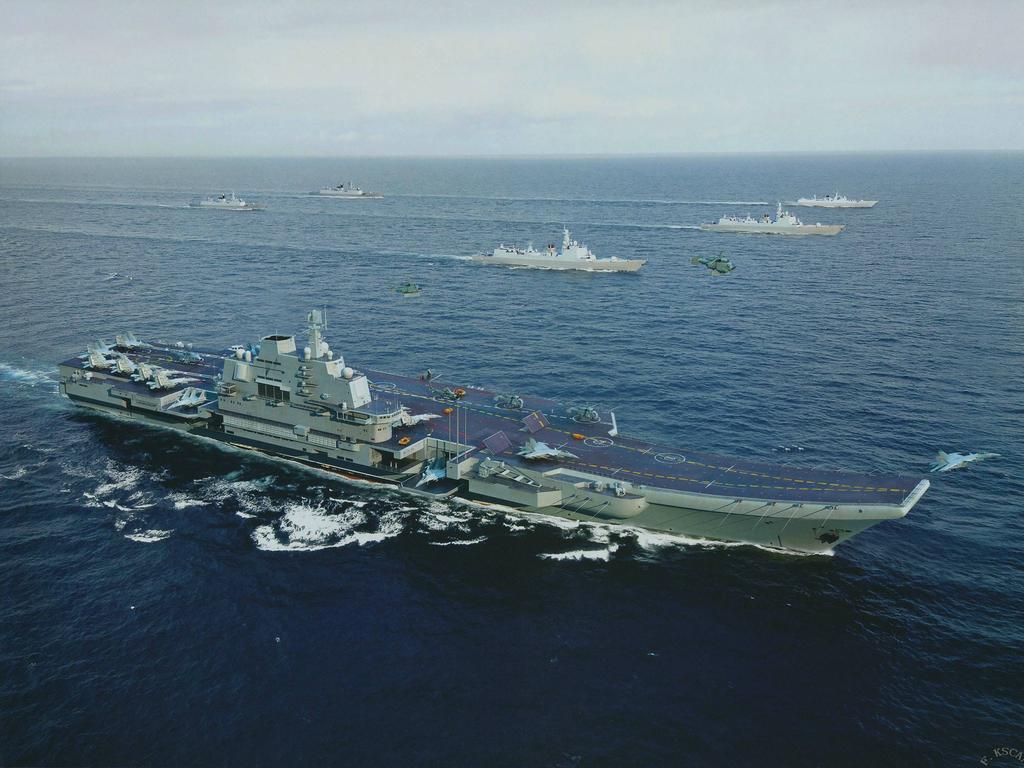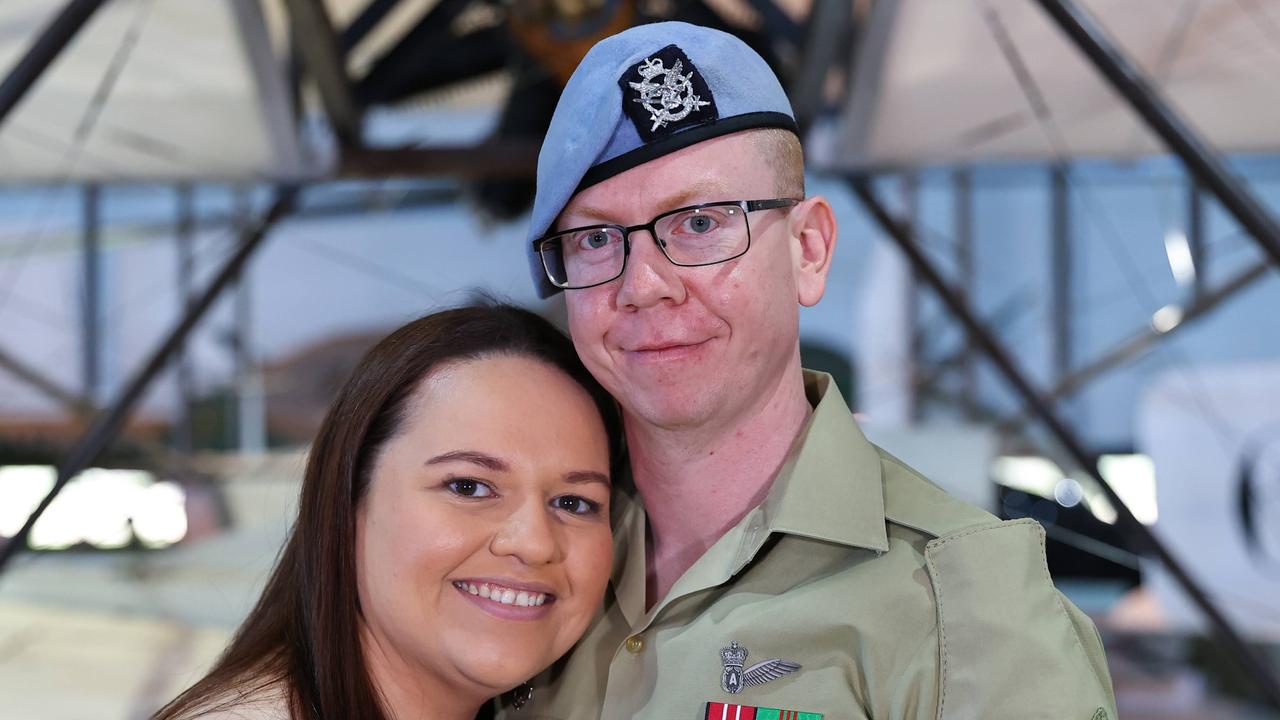Beijing launches enormous South China Sea live-fire exercise as three US carrier battle groups pass by
FORTY Chinese warships and three American aircraft carrier battle groups are converging on the South China Sea as dangerous tensions between the superpowers simmer.

CHINA’s navy has sent its aircraft carrier and more than 40 warships into the South China Sea for its largest live-fire military exercise in the troubled region yet.
And it comes as the United States has three aircraft carrier battle groups converging on the contested waterway for its own exercises.
Chinese state media says the exercises are centred on the aircraft carrier Liaoning, with warships combining from the North, East and South Sea fleets in an overt display of military muscle.
It’s a similar story for the United States Navy.
Both sets of military manouvers are being held as an Asian economic forum gets underway on the Chinese island of Hainan, which borders the disputed South China Sea.
“China wants to show the outside world its determination to defend the fruits of its economic reforms over the past 40 years,” Beijing-based military analyst Zhou Chenming told the South China Morning Post.
“Like the US, China’s military might is one of the government’s political tools to protect the country’s national interests.”
RELATED: China releases images of ‘militarised’ artificial island
Almost 90 per cent of the South China Sea has been declared sovereign territory by Beijing under its arbitrary “Nine Dash Line” which extends some 2000km from its mainland. This is despite an international court of arbitration rejecting its ambitious claims in 2016. Vietnam, The Philippines, Malaysia and Brunei are among the nations asserting territorial claims over the sea based on UN conventions.
The convergence also comes as tensions rise between Beijing and Washington over a looming trade tariff “war”.

CHINA PUTS CARRIERS TO THE TEST
Chinese media reports this is the first time their refurbished Soviet-era aircraft carrier, Liaoning, has engaged in large-scale live-fire drills.
Satellite photographs released last week showed the ship taking part in an enormous procession of more than 40 warships and submarines off Hainan Island.
Our Doves caught stunning naval exercises in the open ocean. Read more @reuters and zoom for an enhanced view. https://t.co/7McG2qtNWw pic.twitter.com/FnbNLVN5yk
— Planet (@planetlabs) March 27, 2018
While that event was no doubt staged for the cameras, this week’s military exercise will pit the best China has to offer against itself.
Hainan Province maritime authorities have banned ship and air activities near the island from today until next Wednesday as the live-fire weapons tests take place.
EXPLORE MORE: China calls new stealth fighter its ‘Trump card’
“This will test the Liaoning’s real combat strength as well as joint-operations skills between the aircraft carrier and warships from other fleets,” Beijing naval analyst Li Jie is reported as saying.
Latest update from Dalian shipyard and the Type 002 carrier under construction (20180404) pic.twitter.com/inofNO9mNd
— @Rupprecht_A (@RupprechtDeino) April 5, 2018
Beijing’s defence ministry spokesman Ren Guoqiang called the large-scale naval drills “routine”. This comes just weeks after it announced such “routine” drills would now be conducted in the South China Sea on a monthly basis.
It comes even as China’s first homegrown aircraft carrier, an as-yet unnamed upgraded version of Liaoning, is set to go to sea for the first time.
State-run media says it will undergo sea trials within weeks.
At least one other carrier is currently under construction.

MUSCLE ON THE MOVE
Washington currently has three aircraft carrier strike groups currently in or around the South China Sea.
The USS Theodore Roosevelt group arrived in Singapore on Monday after a deployment in the Middle East.
It is likely to conduct drills with two US 7th Fleet carrier groups — centred on the USS Ronald Reagan and USS Carl Vinson — as it passes through the disputed waterways.
ICYMI, the Theodore Roosevelt Carrier Strike Group exercised alongside Indian Navy partners as the CSG returned to @US7thFleet following ops in @CENTCOM pic.twitter.com/FSMN7FKyTN
— U.S. Pacific Command (@PacificCommand) April 3, 2018
The USS Carl Vinson has completed a port call to Vietnam — the first such visit since the end of the Vietnam War in the 1970s. It has been conducting joint exercises with Japanese forces in the Western Pacific, and is believed due to return to the US port of San Diego.
DELVE DEEPER: Here’s what the US sees as the future of air combat
Some uncomfirmed accounts say the USS Ronald Reagan group, including the guided-missile cruiser USS Bunker Hill and the guided-missile destroyer USS Sampson has also put to sea.
Elsewhere in the West Pacific, the Amphibious Assault Ship USS Essex is currently at sea undertaking the first operational deployment with the controversial F-35B stealth fighter.
MT @USPacificFleet: #USSEssex Amphibious Ready Group and #13thMEU are continuing an integration exercise in the Pacific this week as part a certification process to test their mission readiness. https://t.co/JsF42FE6n7 pic.twitter.com/0BQoJ6FLEM
— Naval Surface Forces (@SurfaceWarriors) April 5, 2018
“The US’ increasing military presence in the South China Sea indicates that Washington sees Beijing as a serious competitor, not only economically, but also militarily,” Zhou said.
“But China realises that the military gap with the US is still very big, and all its military deployments in the South China Sea are basically defensive, including its DF-21D anti-ship (carrier killer) ballistic missile.”
Carrier strike groups are keys to U.S. dominance over the world's oceans. The #USS Carl Vinson is underway in the #Pacific Ocean for a western Pacific deployment. See more with this week's Naval Update #Map. https://t.co/OGwzjJDZDr pic.twitter.com/T87HMclkxg
— Stratfor (@Stratfor) April 5, 2018



